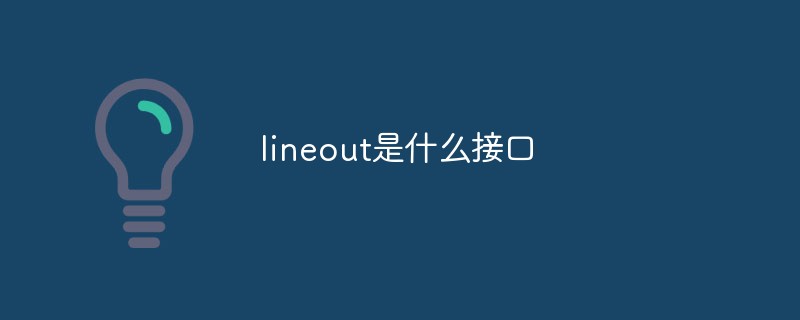Home >Common Problem >What interface is lineout?
Lineout is an audio line input interface. For example, users can record the sound signals of other players into the computer through line-in; while the line-out interface is a commonly used audio line output, and the more popular application is Connect the computer to the speakers.

The operating environment of this tutorial: Windows 7 system, Dell G3 computer.
The line-in interface is an audio line input. For example, you can record the sound signals from other players (non-digital signals such as repeaters) into the computer through the line-in.
The line-out interface is the most commonly used audio line output, and the most popular application is to connect a computer to a speaker.
The mic interface is the microphone interface. If you have a headset, just connect the microphone to this port.
Related expansion:
MIC is the English abbreviation of media interface connector.
Bomar Interconnect Products adds SMB interconnect products to its patented Eliminator coaxial family. The Eliminator coaxial series also includes a range of F-type connectors. These Eliminator interfaces are designed to eliminate the extra cable fittings and PCB connectors that were previously required to mount box or modular integrated components to a circuit board. With SMB interconnect products, users only need to connect the Eliminator connector directly to the electronic device and then plug it into the PCB board.
Microphones can be divided into two types: electric microphones and condenser microphones according to their energy conversion principles. Among them, the electric type can be subdivided into dynamic microphones and aluminum ribbon microphones.
Common commercial microphone types include condenser microphones, crystal microphones, carbon microphones and dynamic microphones. Commonly used condenser microphones use two energy sources: DC bias power supply and electret film. Both condenser microphones and crystal microphones convert sound energy into electrical energy, producing a changing electric field. Carbon microphones use a DC voltage source to change their resistance through sound vibrations, thereby converting acoustic signals into electrical signals. Capacitive, crystal, and carbon microphones all produce a voltage signal proportional to the displacement of the sensitive membrane, while dynamic microphones produce a voltage signal proportional to the vibration rate of the sensitive membrane. Dynamic microphones use permanent magnets as energy sources and convert sound energy into electrical energy based on the inductive effect.
For more related knowledge, please visit the FAQ column!
The above is the detailed content of What interface is lineout?. For more information, please follow other related articles on the PHP Chinese website!